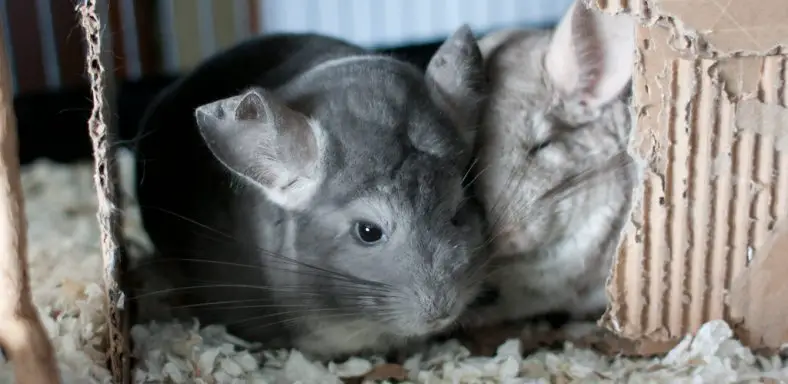If you’re a new chinchilla parent, one of the first questions you’ll likely ask is how to groom your chinchilla. After all, these little creatures need regular grooming to stay healthy and looking their best! This article will teach you everything you need to know about how to groom a chinchilla, from the basics of brushing and bathing to more advanced techniques like clipping their nails. So keep reading for tips on keeping your furry friend looking sharp!
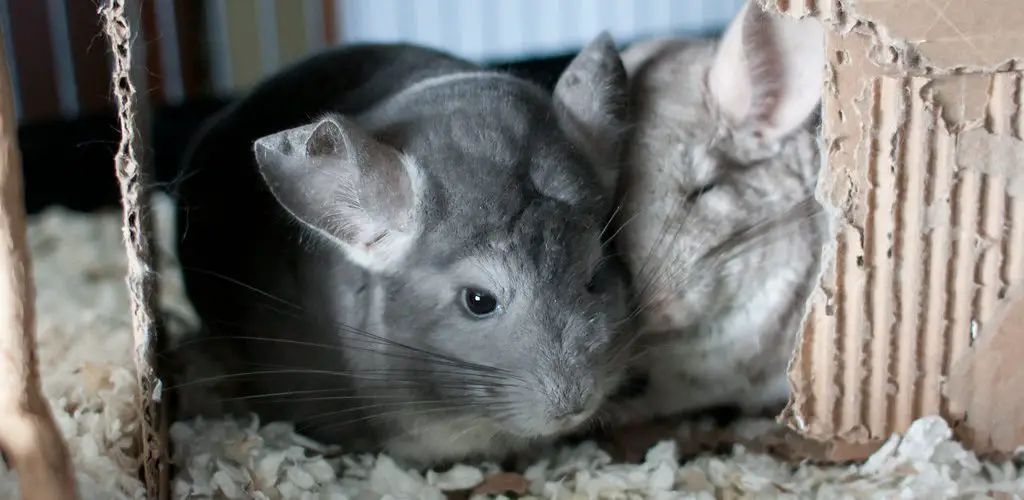
Chinchilla is a rodent species native to the Andes mountains in South America. They are closely related to guinea pigs and look like a cross between a squirrel and a bunny rabbit. Chinchillas are covered in dense, soft fur that can come in various colors, including grey, white, brown, black, and even blue! This fur is beautiful, but it also serves an essential purpose: it helps keep chinchillas warm in their cold mountain home. Chinchillas are spotless animals and groom themselves regularly with their tongue and front paws.
Contents
Do You Need to Groom Chinchillas?
Chinchillas are lovely creatures that are becoming increasingly popular as pets. These friendly animals are native to South America and have thick, soft fur prized by the fashion industry. Because of their delicate fur, chinchillas must be groomed regularly.
Fortunately, grooming chinchillas is relatively easy and only takes a few minutes each day. Regular grooming can help your chinchilla stay healthy and look their best.
Failure to groom chinchillas can lead to several problems, including hair loss, skin irritation, and mats. Mats are especially dangerous because they can cause the chinchilla’s fur to pull away from their skin, leaving them vulnerable to infection.
What Is Included in Grooming a Chinchilla?
Chinchilla grooming includes everything from cleaning their fur to trimming their nails. It is essential to keep your chinchilla well-groomed to maintain their health and hygiene.
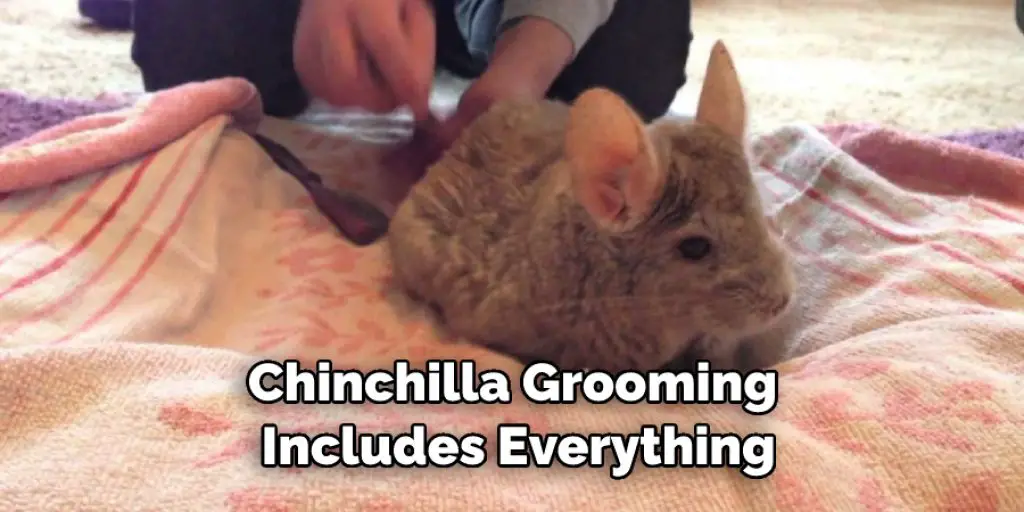
Here Are Some of the Things You Need to Do to Groom Your Chinchilla Properly:
1. Brush Their Fur Regularly
This will help remove any dirt or debris lodged in their fur. It will also help prevent their fur from becoming matted or tangled.
2. Trim Their Nails
You will need to trim your chinchilla’s nails every few weeks in order to keep them at a comfortable length. If they are left untrimmed, they can start to grow into the pads of their feet, which can be very painful.
3. Bathe Them Occasionally
Chinchillas do not need to be bathed often, but it is essential to give them a dust bath at least once a week. This will help remove excess oil from their fur and keep them clean.
4. Check Their Teeth Regularly
Just like humans, chinchillas can develop cavities and other problems with their teeth. Therefore, it is essential to check their teeth regularly and take them to the vet if you notice any problems.
5. Keep an Eye on Their Diet
A healthy diet is essential for keeping your chinchilla well-groomed. Please make sure they get plenty of hay, fresh vegetables, and a small number of pellets. Avoid giving them too many sugary treats, which can lead to dental problems.
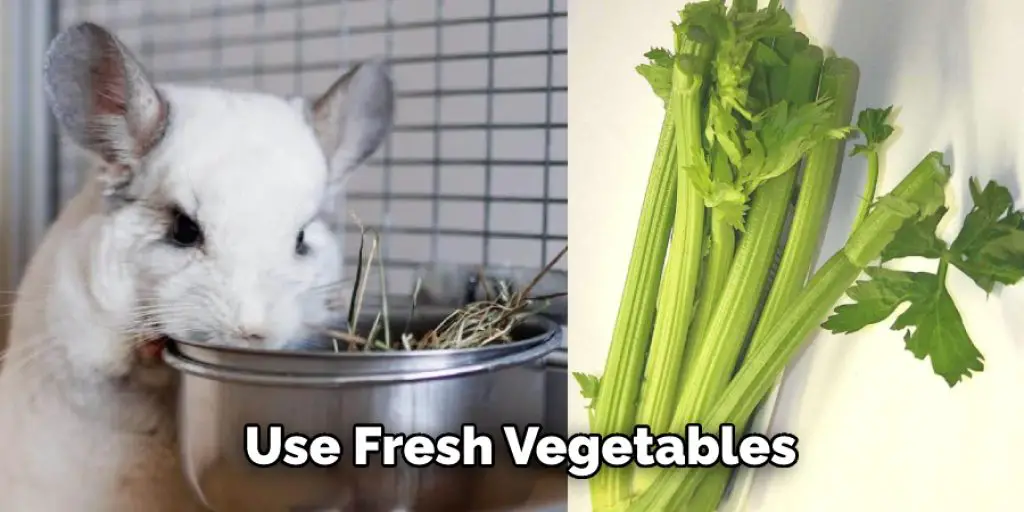
A Detailed Guide on How to Groom a Chinchilla
Brushing fur
Brushing removes loose fur and dirt from the coat; it also helps redistribute the natural oils that keep the fur healthy and look shiny. How often you should brush will depend on the individual chinchilla’s fur type – some chinchillas will need to be brushed every day, while others may only need it once a week.
Things You’ll Need:
- A soft bristle brush
- A metal comb
- A slicker brush (optional)
Step 1: Determine Type of Fur
Before you start grooming, it’s essential to know what type of fur your chinchilla has. There are two types of chinchilla fur – guard hairs and undercoat. Guard hairs are the longer, coarser hairs that make up the top layer of the coat, while the undercoat is made up of softer, shorter hairs.
Step 2: Prepare the Chinchilla
Before you start brushing, it’s essential to get your chinchilla used to being brushed. Start by gently petting your chinchilla all over its body, paying special attention to its fur. Once your chinchilla is used to being petted, you can start using a soft bristle brush to brush its fur lightly.
Step 3: Use a Metal Comb
Start at the head and work your way down the body, using a metal comb to remove any knots or tangles from the fur. Be careful not to pull too hard on the fur, as this can cause pain and discomfort. If you come across a particularly stubborn knot, you can try using a slicker brush to loosen it.
Step 4: Use a Soft Bristle Brush
Once you’ve combed the knots and tangles, use a soft bristle brush to brush the fur lightly. This will help to remove any loose fur and dirt and will also help to distribute the natural oils that keep the fur healthy and looking shiny.
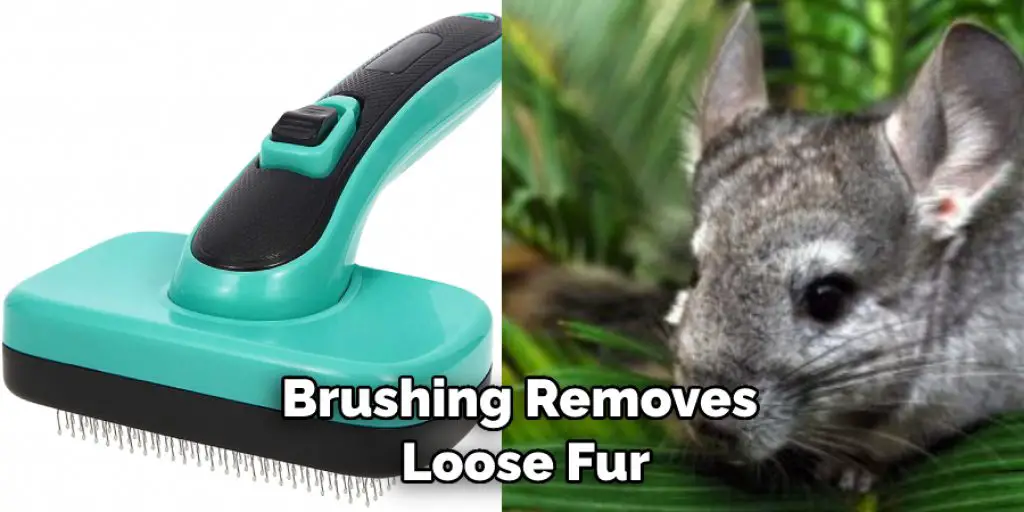
Step 5: Finish Up
Once you’ve finished brushing, give your chinchilla a good pat down to make sure all the loose fur is removed. You can then put your chinchilla back in its cage and enjoy watching it play!
Give Your Chinchilla a Dust Bath
A dust bath is simply a way for your chinchilla to clean itself. Chinchillas roll around in special dust that helps remove any oils or dirt from their fur. Your chinchilla should have a dust bath at least once a week. If your chinchilla is extra dirty, you can give it a second dust bath during the week.
It would be best to use only specially made chinchilla dust when giving your chinchilla a dust bath. Do not use any other powder type, such as baby powder or cornstarch, as these can be harmful to your chinchilla’s health.
Things You’ll Need:
- Chinchilla dust
- A shallow dish or pan
- A towel
Step 1: Choosing the Right Dust
The most crucial part of giving your chinchilla a dust bath is using the correct dust type. Like other types of powders, using chinchilla dust can be harmful to your chinchilla’s health. Chinchilla dust can be found at most pet stores that sell chinchillas online.
Step 2: Prepare the Dust Bath
Once you have the proper dust, it’s time to prepare the dust bath. You’ll need a shallow dish or pan and a towel. First, place the dish or pan filled with chinchilla dust in an area where you can quickly get to it. Then, place the towel over the top of the dish or pan to cover the dust completely.
Step 3: Let Your Chinchilla Enjoy the Dust Bath
Now it’s time to let your chinchilla enjoy its dust bath! Lift the towel and let your chinchilla jump into the dish or pan of dust. Once your chinchilla is in the dust, it will start to roll around and kick up a lot of dust. This is normal behavior and means that your chinchilla is enjoying its bath!
Let your chinchilla play in the dust for 10-15 minutes. Then, use the towel to cover the dish or pan again so that the dust doesn’t get everywhere.
Step 4: Clean Up After the Dust Bath
Once your chinchilla is done with its bath, it’s time to clean up the mess! First, use a vacuum cleaner with a soft brush attachment to remove the dust from the area where your chinchilla was bathing. Next, vacuum any areas where the dust may have spread, such as on furniture or carpet.
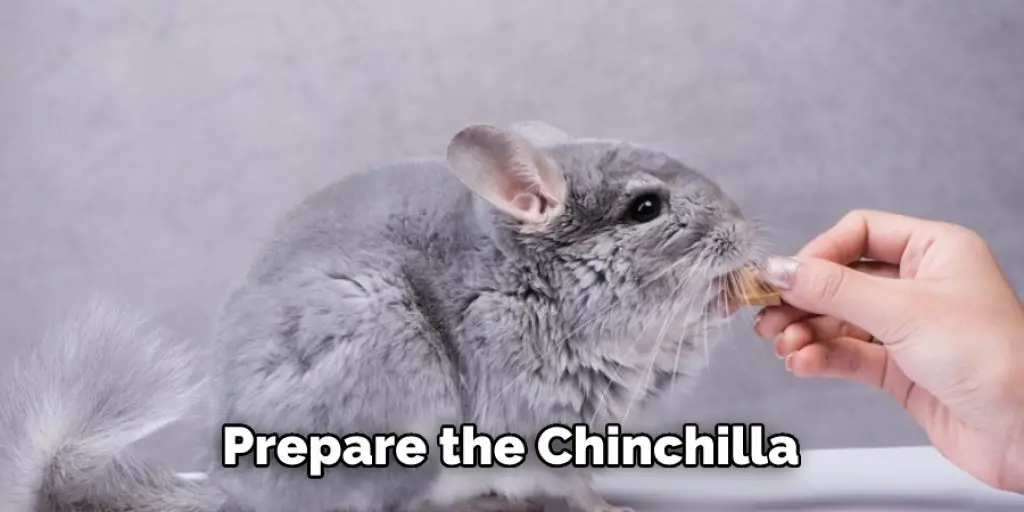
It would help if you also cleaned out the dish or pan you used for the dust bath. Remove all the used chinchilla dust and dispose of it in the garbage. Then, wash the dish or pan with soap and water to remove any residue.
Step 5: Give Your Chinchilla a Treat
After all of that work, your chinchilla deserves a treat! Give your chinchilla a few pieces of its favorite fruit or vegetable as a reward for being such a good sport during its dust bath.
Your chinchilla should have a dust bath at least once a week to keep its fur clean and healthy. You can easily give your chinchilla the perfect dust bath by following these steps!
Trimming Nails
If the chinchilla’s nails are too long, they can get caught on things and break. This is painful for the chinchilla and can lead to infection. Therefore, you should trim your chinchilla’s nails every few weeks.
If you have never trimmed your chinchilla’s nails before, it is best to ask a veterinarian or professional groomer to do it for you the first time. Once you know how to do it, you can trim your chinchilla’s nails at home.
Things You’ll Need:
- Chinchilla
- Vetwrap or similar gauze bandage
- Nail trimmers
- Kwik stop or other styptic powder
Step 1: Prepare the Chinchilla
Put the chinchilla on its back in your lap. You may need to wrap it in a towel to keep it from squirming.
Step 2: Wrap the Chinchilla’s Feet
Wrap the chinchilla’s feet in vet wrap or gauze so that you can see the nails, but the chinchilla can’t move its feet.
Step 3: Trim the Nails
Trim the nails with nail trimmers. Cut them straight across so that you don’t leave any sharp points.
Step 4: Stop Any Bleeding
If you cut the nails too short and they start to bleed, apply some styptic powder or kwik stop the bleeding.
Step 5: Unwrap the Chinchilla
Unwrap the chinchilla and let it go. Of course, it will probably want to run off and hide, but that’s normal.
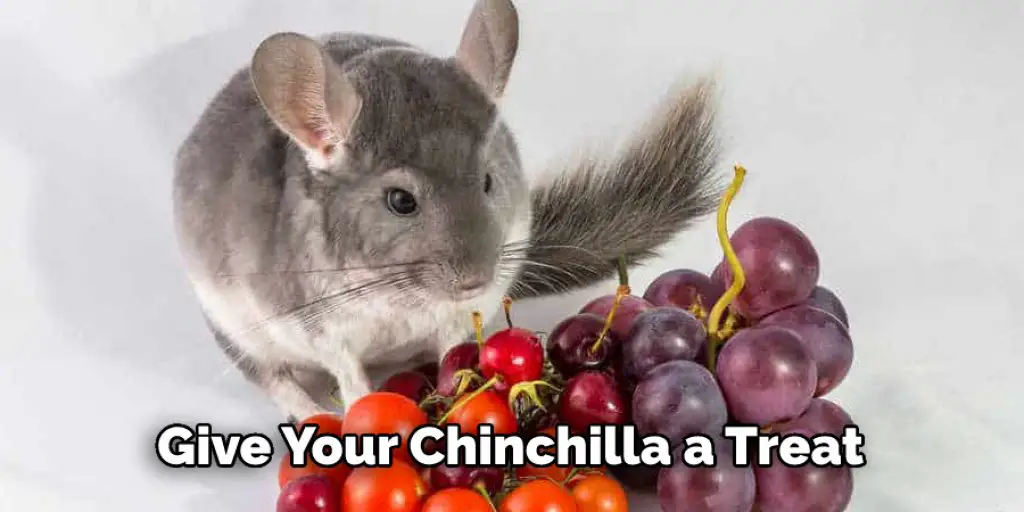
Checking and Cleaning Teeth Regularly
Chinchillas have 28 teeth in total. You should check your chinchilla’s teeth at least once a week for any signs of wear, breakage, or tartar buildup. If you notice any issues, take your chinchilla to the vet for a professional cleaning.
Things You’ll Need:
- Toothbrush
- Water
- Vegetable oil
- Cotton swabs
Step 1: Determine If Your Chinchilla Needs a Teeth cleaning.
If you notice your chinchilla is drooling, has red gums, has terrible breath, or is losing weight, these could be signs that your chinchilla needs teeth cleaning.
Step 2: Collect the Supplies You’ll Need
To brush your chinchilla’s teeth, you’ll need a toothbrush, water, and vegetable oil. You may also want to have cotton swabs on hand if you need to clean any tartar buildup off your chinchilla’s teeth.
Step 3: Brush Your Chinchilla’s Teeth
Dip the toothbrush in the water and then add a few drops of vegetable oil to the bristles. Gently brush your chinchilla’s teeth, careful not to hurt their gums.
Step 4: Clean Any Tartar Buildup
If you see any tartar buildup on your chinchilla’s teeth, use a cotton swab to remove it gently.
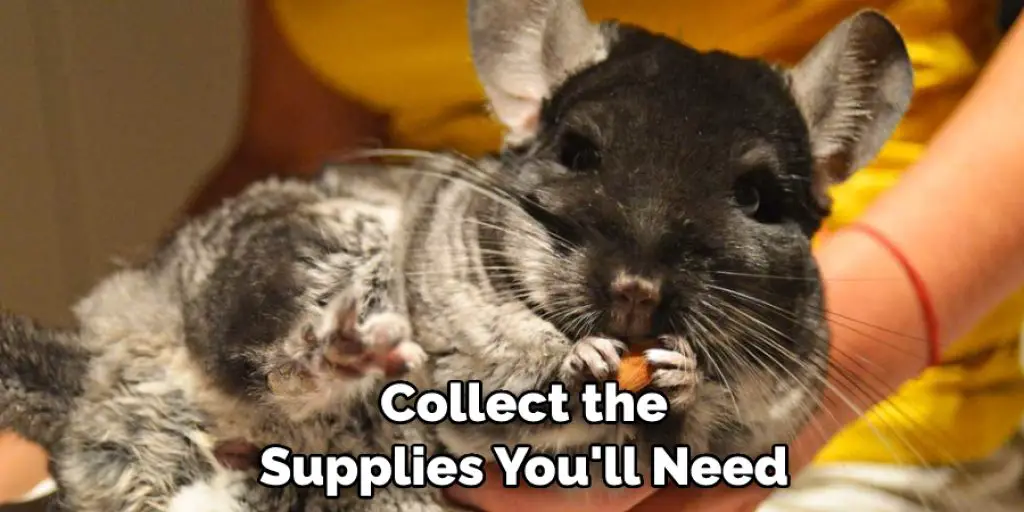
Step 5: Repeat Weekly
To keep your chinchilla’s teeth healthy, repeat this process at least once a week.
Proper Diet
One of the most important aspects of keeping your chinchilla healthy and happy is providing it with a nutritious diet. A good diet for a chinchilla includes hay, fresh vegetables, and a small amount of pellets.
Hay should make up the majority of your chinchilla’s diet and should be available to them. Fresh vegetables can be given to your chinchilla as a treat and should be limited to a few pieces per day. Pellets should only make up a small portion of your chinchilla’s diet and should be avoided.
If you are feeding your chinchilla a diet high in pellets, you may notice that their fur starts to become oily and greasy. This is because pellets are high in fat and can cause your chinchilla to produce too much oil. Only feed your chinchilla a small number of pellets and supplement their diet with hay and fresh vegetables.
Common Mistakes When Grooming a Chinchilla
One of the people’s most common mistakes when grooming their chinchilla is not being gentle enough. Remember that your chinchilla’s fur is very delicate, and you need to be careful not to pull or tug on it.
Another common mistake is using the wrong type of brush. For example, you should never use a human hairbrush on your chinchilla, as this can damage their fur. Instead, opt for a soft bristle brush designed explicitly for chinchillas.
Finally, many people make the mistake of bathing their chinchilla too often. Chinchillas should only be bathed around once a month, as too much bathing can strip their fur of natural oils and lead to dryness.
Conclusion:
Grooming a chinchilla is an essential part of their care. It keeps them looking neat and tidy, but it also helps to ensure that they are healthy and free from parasites. Ensure you groom your chinchilla at least once a week to keep them in good condition. We hope now you know ow how to groom a chinchilla.

